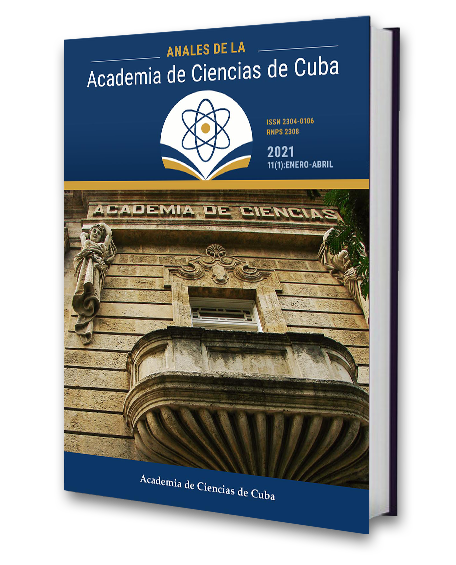Immunosenescence markers: relationships with lung cancer
Keywords:
immunosenescence, T cells, late-stage differentiated T cells, Biomodulina T, non-small cell lung cancer, CIMAvax-EGFAbstract
Introduction: The changes that occur in the immune system with aging are commonly termed immunosenescence. Objective: To investigate the effect of age and gender on lymphocyte populations in healthy humans and patients diagnosed with lung cancer, to evaluate immunosenescence biomarkers to predict clinical efficacy of CIMAvax-EGF cancer vaccine and to evaluate whether the administration of a thymic factor influences the distribution of immunosenescence biomarkers and populations of the immune system.
Methods: an evaluation was made of immunosenescence markers in healthy people of all ages and in patients diagnosed with non-small cell lung cancer (NSCLC).
Results: In the healthy volunteers, CD4+ T lymphocytes and B cells decreased with age, while terminally differentiated T cells increased. There were different patterns of immunosenescence with respect to sex. The treatment of elderly patients diagnosed with recurrent respiratory infections with the thymic factor Biomodulina T (BT) induced the expansion of naïve CD4+ T cells, CD8+ stem cell-like memory (SCM) and CD4+ recent thymic emigrants (RTE), whereas CD4+ and CD8+ T cells expressing PD1 decreased after the treatment with BT. Moreover, BT did not increase CD4+ Tregs. The absolute count of CD19+ and the CD4/CD8 ratio were significantly lower in NSCLC patients than in age-paired controls, while IL-6 serum concentration and terminally differentiated T cells increased in NSCLC patients treated with platinum-based chemotherapy. Vaccinated patients with frequency <24 % of CD8 + CD28− T cells, >40 % of CD4 T cells and CD4/CD8 ratio higher than two at the beginning of immunotherapy achieved a 20-month increase in median survival regarding control patients. This study showed for the first time the pattern of immunosenescence markers in the Cuban population and suggests that these markers can be modified by age, sex, cancer and platinum-based chemotherapy.
Downloads
Downloads
Published
How to Cite
Issue
Section
License
The journal Anales de la Academia de Ciencias de Cuba protects copyright, and operates with a Creative Commons License 4.0 (Creative Commons Attribution-NonCommercial License 4.0). By publishing in it, authors allow themselves to copy, reproduce, distribute, publicly communicate their work and generate derivative works, as long as the original author is cited and acknowledged. They do not allow, however, the use of the original work for commercial or lucrative purposes.
The authors authorize the publication of their writings, retaining the authorship rights, and assigning and transferring to the magazine all the rights protected by the intellectual property laws that govern in Cuba, which imply editing to disseminate the work.
Authors may establish additional agreements for the non-exclusive distribution of the version of the work published in the journal (for example, placing it in an institutional repository or publishing it in a book), with recognition of having been first published in this journal.
To learn more, see https://creativecommons.org






